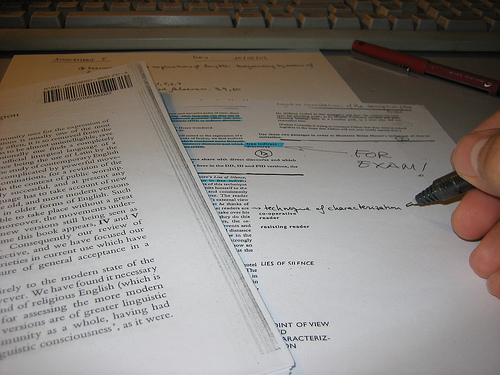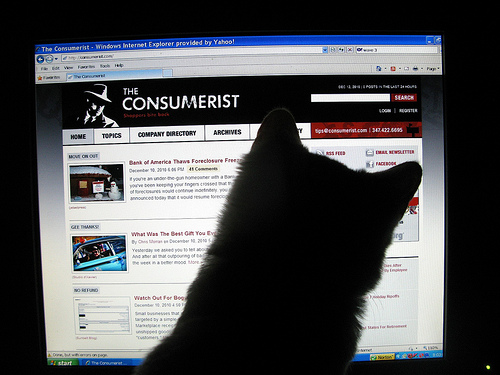If you are a working freelance writer, language is your stock in trade. Obviously, you love words and language or you would not be working in this field. Should you show off your love of prose by using the most exquisite and complicated version of English that you can find when doing work for clients? Nope. Readability is more important than making your work look pretty, and online readability calculators are an important part of your freelance writing toolbox.
Let me explain. Your first goal as a freelance writer is to capture your reader’s interest. Make your audience want to click on your article or blog post, pick up your book, browse through your brochure, or whatever you have been asked to write.
Your next task to write in a way that your audience understands that message that you are trying to convey. You would not use the same terms or writing style if you knew that you were writing a highly technical document for a group of engineers as you would for general content about the best ways to stay cool in the summer.
Types of Readability Tests
Flesch/Flesch–Kincaid Readability Tests
How do you determine how difficult a particular piece of English writing is? The Flesch/Flesch–Kincaid readability tests are used to measure this result using word length and sentence length. The Flesch-Kincaid (F-K) test was developed for the US Navy in 1975. This formula was used by the Army to assess readability of technical manuals, and it has been used by a number of states to regulate that the language level that the language used in legal documents, such as insurance policies, shall be no higher than a ninth grade reading difficulty level.
The Flesch reading-ease test is scored in a manner indicating that higher scores indicate material that is easier to read. The lower the number, the more difficult the passage is for someone to read.
| Score | Notes |
|---|---|
| 90-100 | Text is easily understood by an average 11-year-old student |
| 60-70 | Text can be understood by 13-15 year old students |
| 0-30 | Text can be read and understood by university graduates |
Gunning Fog Index
The Gunning Fog Index looks at the number of complex words in the text – those with three or more syllables – when determining its readability level. Proper nouns, compound words and jargon are disregarded are omitted. Results range from Grade 1 level to an unlimited number. The ideal score for this index is in the 7-8 range.
SMOG Index
The SMOG Index was developed in the late 1960s. Here’s how it works: You take 30 sentences from your text (10 each from the beginning, middle and end) and count every word with three or more syllables in each group. Next, you calculate the square root of that number and round it to the nearest 10. Add three to that number. The figure you get is the US Grade level that should be able to read the text.
If this seems like too much trouble, you can use an online readability calculator with SMOG Index capability that will do the work for you. The recommended writing level on this system of measurement is between seven and eight.
Coleman Liau Index
This Index looks at the number of characters instead of the syllables in each word when determining its readability calculation. Its results are in US grade level scores from 1-12. The recommended writing level is seven-eight.
Automated Readability Index
This Index uses a mathematical score with two variables: characters per word and words per sentence. It has been in use since 1967. The scores correspond to US grade levels. If the score result has a decimal, it is rounded up to the next whole number. The recommended writing level is seven-eight.
Why Readability Scores Matter to Freelance Writers
By now you may be wondering what a number on a readability index has to do with your work as a freelance writer. Plenty, as it turns out. You want to write in a way that speaks “to” your audience, not “at” them.
If you use language that gets the message across, but is a bit too technical, full of jargon or has too many syllables when the reader first scans the page, you may lose out on having someone read what you have written, no matter how informative, helpful, funny, provocative or just plain brilliant it happens to be.
That would be a real shame, because I know how hard anyone who puts words together and gets paid for it has to work to produce something worth showing to a client. Finding the right voice and tone for a piece is challenging enough without having it sent back for revisions or plain, flat-out rejected because you were speaking a little bit too far above the intended audience.
This is not the same thing as “dumbing down” a topic when you write. That idea is insulting to both writers and readers alike. It’s a matter of finding the right words to fit the occasion and giving the reader something that they will find interesting, solve a problem they are having, educate them, give them a break and a laugh for a few minutes, or whatever your goal happens to be.
Online Readability Calculators: Check the Score Before you Submit your Work
There are several online readability calculators available for free that you can use to make sure that your work is at the appropriate grade level for your audience. As a general rule, content that you are writing for a general audience should be written for about a Grade 8 level reader.
This online readability tool is quick and easy to use for your own work or existing content on websites. Either copy and paste your content or the web address into the appropriate box and click “Calculate Readability.”
The results will appear within seconds. You’ll discover the readability of the text or content by Grade level.
Copy and paste a sample of your work of between 200-500 words into this free online readability calculator and you’ll get results from seven readability formulas.
Copy and paste your text into the box provided and this free tool will analyze the number of words and characters, sentences, average syllables per word and words per sentence. You’ll also see the US grade level needed to understand it based on different readability indexes. This utility also suggests sentences you may want to consider rewriting to improve your readability index – an excellent feature.
The readability level of your work matters. You want to ensure that you are choosing the right words and phrases to appeal to your target audience. Getting them to click on, pick up or skim your work is only part of what you want to accomplish. You also want them to actually read it and understand the message you want to get across to them.
photo credit: Trusco Tool Box via photopin (license)
photo credit: ¿Exaqué? via photopin (license)
photo credit: Informed Kitty via photopin (license)




Leave a Reply